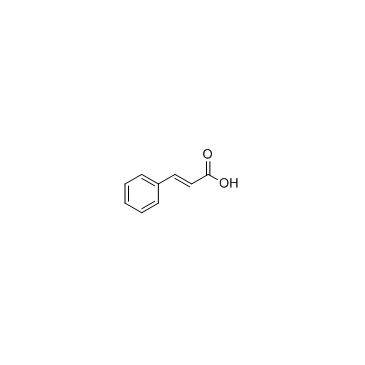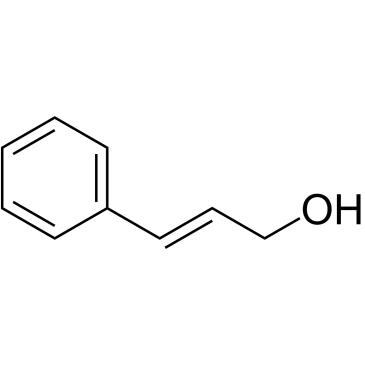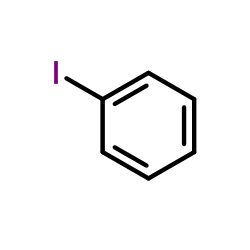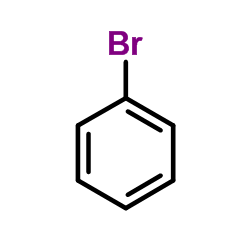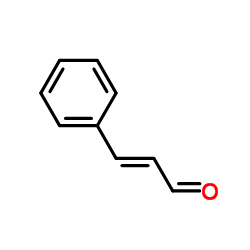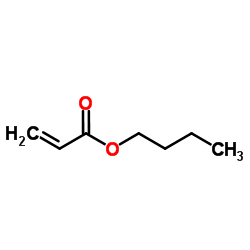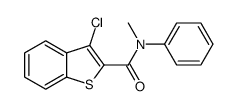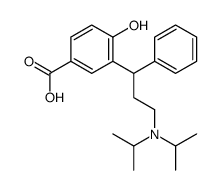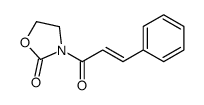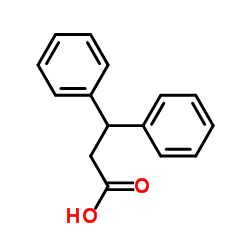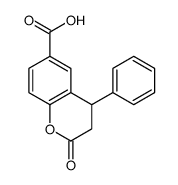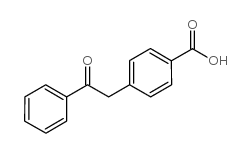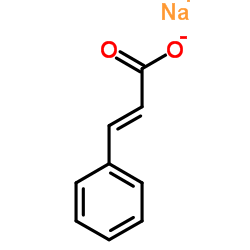621-82-9
| 中文名 | 肉桂酸 |
|---|---|
| 英文名 | cinnamic acid |
| 中文别名 |
3-苯基丙烯酸
beta-苯基丙烯酸 |
| 英文别名 |
(E)-3-Phenylprop-2-enoic acid
Propenoic acid, 3-phenyl-, (trans)- Cinnamic acid (2E)-3-Phenylacrylic acid trans-Cinnamic Acid EINECS 205-398-1 MFCD00004369 QV1U1R &&Trans or E Form 2-Propenoic acid, 3-phenyl-, (2E)- 4-09-00-02002 (Beilstein Handbook Reference) trans-b-Carboxystyrene 2-Propenoicacid, 3-phenyl- |
| 描述 | Cinnamic acid 在癌症干预中有潜在的用途,其对胶质母细胞瘤,黑色素瘤,前列腺癌,肺癌细胞的 IC50 值为 1-4.5 mM。 |
|---|---|
| 相关类别 | |
| 靶点 |
Human Endogenous Metabolite |
| 体外研究 | 用上皮和神经外胚层来源的各种肿瘤细胞的肉桂酸(CINN)治疗在暴露3天后导致剂量依赖性生长抑制。引起肿瘤细胞增殖减少50%(IC50)的抑制浓度在1.2至4.5mM之间。还显示需要20mM肉桂酸来引起FS4细胞中的IC50,即比肿瘤细胞多5至20倍。除抑制肿瘤细胞增殖外,肉桂酸还引起与黑素细胞分化一致的形态变化。在用5mM肉桂酸处理后5天内,黑素瘤1011细胞看起来扩大,细胞质与核比率显着增加,组织良好的细胞骨架,形成长的树突状过程并变得高度黑色。通过使用带有基质胶涂层滤器的改良Boyden室的体外侵袭测定来评估肉桂酸处理的黑素瘤1011,A375(M)和SKMEL28细胞降解和穿过组织屏障的能力的变化。在用肉桂酸连续处理3天后,观察到3个测试肿瘤系中的剂量依赖性侵袭能力丧失。用5mM肉桂酸处理导致75-95%的侵袭性丧失[1]。 |
| 细胞实验 | 从人类恶性肿瘤建立的细胞系是A549(肺癌); PC3(M),Du145和LNCaP(前列腺癌); A172,U251(胶质母细胞瘤);和SKMEL28,A375(M),1011(黑色素瘤)。生长速率通过细胞计数确定。简言之,将5×10 4个细胞接种在24孔板的每个孔中,使其附着过夜,并在第二天用化合物(例如,肉桂酸:2.5,5,10,20,30mM)处理。细胞在药物存在或不存在下于37℃生长3天,然后用胰蛋白酶/ EDTA分离并在Coulter计数器中计数。活力由台盼蓝排除法测定[1]。 |
| 参考文献 |
| 密度 | 1.2±0.1 g/cm3 |
|---|---|
| 沸点 | 265.0±0.0 °C at 760 mmHg |
| 熔点 | 133ºC |
| 分子式 | C9H8O2 |
| 分子量 | 148.159 |
| 闪点 | 189.5±9.6 °C |
| 精确质量 | 148.052429 |
| PSA | 37.30000 |
| LogP | 2.41 |
| 外观性状 | 白色结晶粉末 |
| 蒸汽压 | 0.0±0.5 mmHg at 25°C |
| 折射率 | 1.616 |
| 储存条件 | 存放在密封容器内,并放在阴凉、通风、干燥处,防止日晒。储存的地方必须远离氧化剂。 |
| 稳定性 | 1. 远离氧化物。 2. 存在于烟气中。 |
| 分子结构 | 1、 摩尔折射率:43.70 2、 摩尔体积(cm3/mol):125.0 3、 等张比容(90.2K):332.0 4、 表面张力(dyne/cm):49.7 5、 极化率(10-24cm3):17.32 |
| 计算化学 | 1、 疏水参数计算参考值(XlogP):2.1 2、 氢键供体数量:1 3、 氢键受体数量:2 4、 可旋转化学键数量:2 5、 拓扑分子极性表面积(TPSA):37.3 6、 重原子数量:11 7、 表面电荷:0 8、 复杂度:155 9、 同位素原子数量:0 10、 确定原子立构中心数量:0 11、 不确定原子立构中心数量:0 12、 确定化学键立构中心数量:0 13、 不确定化学键立构中心数量:0 14、 共价键单元数量:1 |
| 更多 | 1. 性状:白色单斜晶体,微有桂皮气味。 2. 密度(g/mL,25/4℃):1.248 3. 相对蒸汽密度(g/mL,空气=1):未确定 4. 熔点(ºC):135~135.7 5. 沸点(ºC,常压):300 6. 沸点(ºC,5.2kPa):未确定 7. 折射率(n20D):1.555 8. 闪点(ºC): >100 9. 比旋光度(º):未确定 10. 自燃点或引燃温度(ºC):未确定 11. 蒸气压(kPa,25ºC):未确定 12. 饱和蒸气压(kPa,60ºC):未确定 13. 燃烧热(KJ/mol):未确定 14. 临界温度(ºC):未确定 15. 临界压力(KPa):未确定 16. 油水(辛醇/水)分配系数的对数值:未确定 17. 爆炸上限(%,V/V):未确定 18. 爆炸下限(%,V/V):未确定 19. 溶解性:不微溶于水,易溶于酸、苯、丙酮、冰醋酸,溶于乙醇、甲醇和氯仿中。 |
Synonym:Phenylacrylic acid; 3-Phenylacrylic acid; 3-Phenyl-2-propenoic acid Section 2 - COMPOSITION, INFORMATION ON INGREDIENTS
Risk Phrases: 36/38 Section 3 - HAZARDS IDENTIFICATION EMERGENCY OVERVIEW
Irritating to eyes and skin. Potential Health Effects Eye: Causes eye irritation. Skin: Causes skin irritation. Ingestion: Causes gastrointestinal irritation with nausea, vomiting and diarrhea. Inhalation: Causes respiratory tract irritation. Chronic: No information found. Section 4 - FIRST AID MEASURES Eyes: Immediately flush eyes with plenty of water for at least 15 minutes, occasionally lifting the upper and lower eyelids. Get medical aid immediately. Skin: Immediately flush skin with plenty of water for at least 15 minutes while removing contaminated clothing and shoes. Get medical aid if irritation develops or persists. Ingestion: If victim is conscious and alert, give 2-4 cupfuls of milk or water. Never give anything by mouth to an unconscious person. Get medical aid. Inhalation: Remove from exposure and move to fresh air immediately. If not breathing, give artificial respiration. If breathing is difficult, give oxygen. Get medical aid. Notes to Physician: Section 5 - FIRE FIGHTING MEASURES General Information: As in any fire, wear a self-contained breathing apparatus in pressure-demand, MSHA/NIOSH (approved or equivalent), and full protective gear. During a fire, irritating and highly toxic gases may be generated by thermal decomposition or combustion. Extinguishing Media: Use foam, dry chemical, or carbon dioxide. Section 6 - ACCIDENTAL RELEASE MEASURES General Information: Use proper personal protective equipment as indicated in Section 8. Spills/Leaks: Vacuum or sweep up material and place into a suitable disposal container. Reduce airborne dust and prevent scattering by moistening with water. Clean up spills immediately, observing precautions in the Protective Equipment section. Section 7 - HANDLING and STORAGE Handling: Wash thoroughly after handling. Wash hands before eating. Use with adequate ventilation. Avoid contact with skin and eyes. Avoid ingestion and inhalation. Storage: Store in a cool, dry place. Store in a tightly closed container. Section 8 - EXPOSURE CONTROLS, PERSONAL PROTECTION Engineering Controls: Use adequate ventilation to keep airborne concentrations low. Exposure Limits CAS# 621-82-9: Personal Protective Equipment Eyes: Wear appropriate protective eyeglasses or chemical safety goggles as described by OSHA's eye and face protection regulations in 29 CFR 1910.133 or European Standard EN166. Skin: Wear appropriate protective gloves to prevent skin exposure. Clothing: Wear appropriate protective clothing to prevent skin exposure. Respirators: Follow the OSHA respirator regulations found in 29 CFR 1910.134 or European Standard EN 149. Use a NIOSH/MSHA or European Standard EN 149 approved respirator if exposure limits are exceeded or if irritation or other symptoms are experienced. Section 9 - PHYSICAL AND CHEMICAL PROPERTIES Physical State: Solid Color: white Odor: Honey floral odor. pH: Not available. Vapor Pressure: Not available. Viscosity: Not available. Boiling Point: 300 deg C Freezing/Melting Point: 133 deg C Autoignition Temperature: Not applicable. Flash Point: 212 deg F ( 100.00 deg C) Explosion Limits, lower: Not available. Explosion Limits, upper: Not available. Decomposition Temperature: Not available. Solubility in water: Insoluble in water. Specific Gravity/Density: Not available. Molecular Formula: C9H8O2 Molecular Weight: 148.0548 Section 10 - STABILITY AND REACTIVITY Chemical Stability: Stable under normal temperatures and pressures. Conditions to Avoid: Incompatible materials. Incompatibilities with Other Materials: Strong oxidants. Hazardous Decomposition Products: Carbon monoxide, irritating and toxic fumes and gases, carbon dioxide. Hazardous Polymerization: Has not been reported. Section 11 - TOXICOLOGICAL INFORMATION RTECS#: CAS# 621-82-9: GD7800000 LD50/LC50: CAS# 621-82-9: Draize test, rabbit, skin: 500 mg/24H Mild; Oral, mouse: LD50 = 5 gm/kg; Oral, rat: LD50 = 2500 mg/kg. Carcinogenicity: Cinnamic Acid - Not listed by ACGIH, IARC, or NTP. Other: See actual entry in RTECS for complete information. Section 12 - ECOLOGICAL INFORMATION Section 13 - DISPOSAL CONSIDERATIONS Products which are considered hazardous for supply are classified as Special Waste and the disposal of such chemicals is covered by regulations which may vary according to location. Contact a specialist disposal company or the local waste regulator for advice. Empty containers must be decontaminated before returning for recycling. Section 14 - TRANSPORT INFORMATION IATA Not regulated as a hazardous material. IMO Not regulated as a hazardous material. RID/ADR Not regulated as a hazardous material. Section 15 - REGULATORY INFORMATION European/International Regulations European Labeling in Accordance with EC Directives Hazard Symbols: XI Risk Phrases: R 36/38 Irritating to eyes and skin. Safety Phrases: S 26 In case of contact with eyes, rinse immediately with plenty of water and seek medical advice. S 28 After contact with skin, wash immediately with... WGK (Water Danger/Protection) CAS# 621-82-9: 1 Canada CAS# 621-82-9 is listed on Canada's DSL List. CAS# 621-82-9 is not listed on Canada's Ingredient Disclosure List. US FEDERAL TSCA CAS# 621-82-9 is listed on the TSCA inventory. SECTION 16 - ADDITIONAL INFORMATION N/A |
|
毒理学数据: 1、急性毒性:大鼠(口服)LD50: 2,500 mg/kg 大鼠(腹膜)LD50:1,600 mg/kg 小鼠(口服)LD50: 5mg/kg 小鼠(腹膜)LD50:160 mg/kg 小鼠(静脉)LD50:380 mg/kg 猪(口服)LDLo:>5mg/mg 由于食盐的LD50是3,000 mg/kg,BPA的急性毒性程度与食盐同。 生态学数据: 通常对水是不危害的,若无政府许可,勿将材料排入周围环境。 CHEMICAL IDENTIFICATION
HEALTH HAZARD DATAACUTE TOXICITY DATA
|
| 上游产品 9 | |
|---|---|
| 下游产品 10 | |
| 海关编码 | 2916399090 |
|---|---|
| 中文概述 | 2916399090 其他芳香一元羧酸. 增值税率:17.0% 退税率:9.0% 监管条件:无 最惠国关税:6.5% 普通关税:30.0% |
| 申报要素 | 品名, 成分含量, 用途, 丙烯酸、丙烯酸盐或酯应报明包装 |
| Summary | 2916399090 other aromatic monocarboxylic acids, their anhydrides, halides, peroxides, peroxyacids and their derivatives VAT:17.0% Tax rebate rate:9.0% Supervision conditions:none MFN tariff:6.5% General tariff:30.0% |


